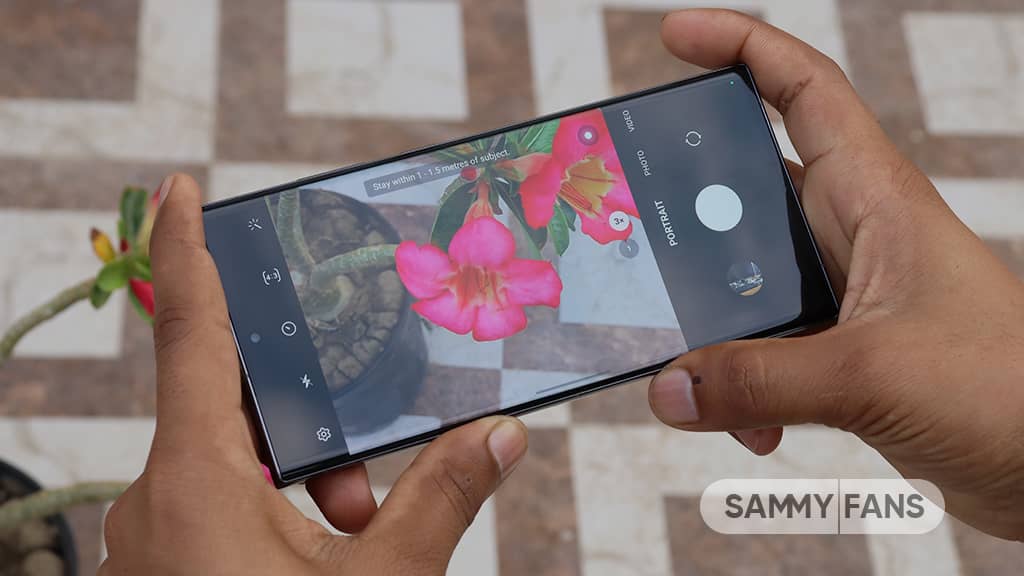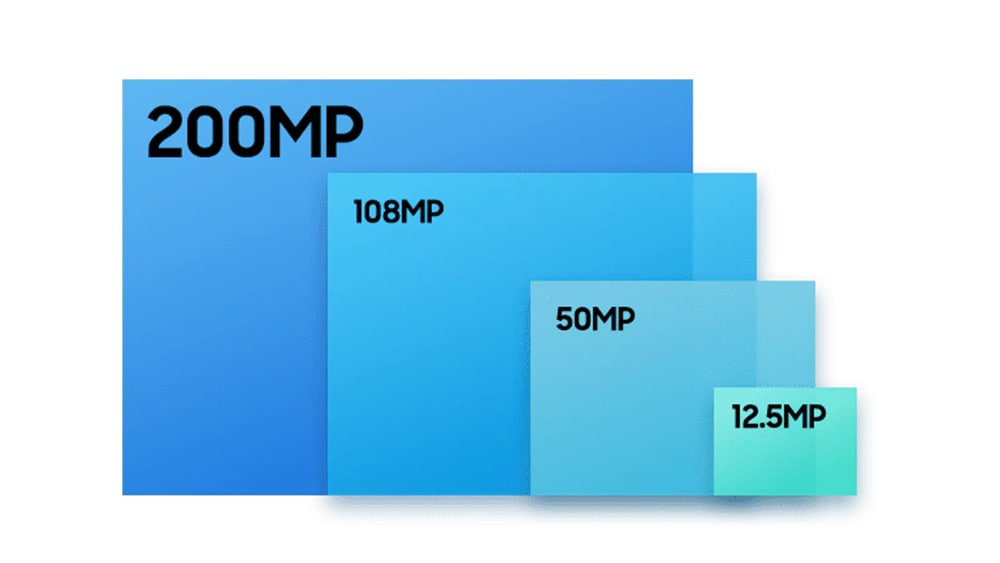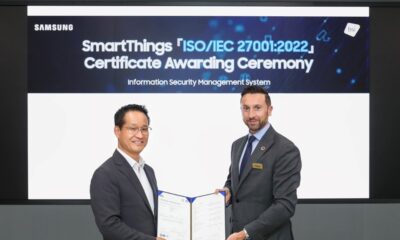News
Samsung Galaxy S23 Ultra is an unbeatable camera smartphone, thanks ISOCELL HP2

Samsung continues to innovate camera and sensor technologies to provide a professional-level camera experience on smartphones. The Samsung Galaxy S23 Ultra boasts a professional-level camera with the ISOCELL HP2, the largest sensor of the Galaxy series with adaptive pixels, and diverse advanced technologies.
The ISOCELL HP2 is the largest image sensor in the Galaxy series ever, featuring a 200-megapixel resolution. With massive resolution integrated, the sharpness of colors and images is increased, and even the smallest details of the moment can be recorded even in difficult environments.
From 200-megapixel that delicately record everyday moments, to AI-based advanced pixel technology for Nightography, fast and accurate autofocus, and 8K video shooting with a wider angle of view. Let’s enjoy the special camera experience provided by the Samsung Galaxy S23 Ultra with the ISOCELL HP2.
High-resolution image capturing
A 200-megapixel image is 16 times larger than a 12.5-megapixel image. In other words, it contains 16 times more information and details. In general, cropping or enlarging an image reduces the number of pixels, resulting in a blurry picture, whereas a high-pixel image can maintain a relatively high resolution even after cropping.
In the case of a 200-megapixel image taken with the Galaxy S23 Ultra, even if it is cut in half both horizontally and vertically, there are still 50-megapixel left to preserve the richness and clarity of detail. In addition, ISOCELL HP2 implements the color of images more accurately through advanced deep-learning algorithms.

New pixel structure
Samsung improved the pixel structure so that each pixel in the ISOCELL HP2 image sensor can absorb more light and express richer colors. The newly designed pixel structure, Dual Vertical Transfer Gate (D-VTG), enables accurate color expression even in an overly bright environment.
Three ways in one package
- 200-megapixel, 50-megapixel and 12-megapixel
The Galaxy S23 Ultra’s ISOCELL HP2 camera allows users to shoot with the optimal pixel they want through adaptive pixel technology. Tetra2pixel technology utilizes all 200 million pixels when taking pictures, or uses them in groups of 4 or 16.

In basic mode or in a dark environment, 12-megapixel shooting that captures a lot of light with large pixels provides bright and clear pictures, and in bright environments that require detailed description, all 200 million pixels are used to capture rich details in images.
Striking NIGHTOGRAPHY
Samsung Galaxy S23 Ultra’s Nightography feature has dramatically improved the shooting experience in dark environments. Powered by AI image signal processing technology, the data stored in the image sensor provides clear color and quality as if you were seeing it with your eyes even at night.

Here, the tetra-squared pixel technology of ISOCELL HP2 merges 16 adjacent pixels into one in a dark environment and adjusts the size to 2.4um so that one pixel absorbs more light. This absorbed light information is optimized with the Galaxy S23 Ultra’s advanced AI technology and reborn as a bright and clear picture.
Speed and accuracy
The ISOCELL HP2 improves autofocus technology and enables sharp capture of fast-moving subjects. Unlike previous products, Super QPD autofocus technology is characterized by utilizing all pixels of the image sensor for phase difference detection.
Super QPD technology, which uses all 200 million pixels for autofocus, can quickly and accurately capture moving objects, compared to 180 million pixel products that use only 3% of the pixels of the image sensor for phase detection.
8K videography at 30fps
For 8K video shooting, the ISOCELL HP2 uses tetra-squared pixel technology to combine four pixels into one large pixel to operate as 50 million pixels. Users can shoot cinematic 8K videos at 30fps with brighter, clearer colors and a wider angle of view.
Follow our socials → Google News, Telegram, Twitter, Facebook
News
Here’s why Google Messages replaced Samsung Messages on Galaxy devices

Samsung’s latest foldable phones come with Google Messages by default. The company has now revealed the reason behind this move on Galaxy devices. Samsung says Google Messages replaced Messages to foster RCS adoption.
According to AndroidAuthority, a source explained Samsung’s decision to switch to Google Messages as the default messaging app. The recently released Galaxy Z Flip 6 and Z Fold 6 come with Google Messages with RCS enabled by default.
Looks like promoting Google Messages on Galaxy devices will boost RCS adoption. Samsung Messages isn’t already installed on newer phones. However, one’s stopping you from getting it on your Galaxy from the Galaxy Store.
While many apps support the RCS feature, Google Messages offer the best user experience. Making it a default messaging app is an effort to boost the adoption of RCS tech. Apple is also preparing to bring RCS chat functionality to iMessage for iPhones.
What Samsung source said:
- Even if messaging apps follow the RCS standard, the availability may be limited depending on which app the other party uses. That’s why we decided to make Google Messages the common messaging platform, allowing Galaxy users to communicate more freely. This also enables a messaging app to respond to changes of the RCS standard more quickly and efficiently.
Previously, Samsung devices launched in the US came with two messaging apps. This time, the company has removed the Samsung Messages. During the first setup, users are notified that Google Messages is the default messaging application.
News
Samsung SmartThings gets ISO 27001 certified

Samsung SmartThings gained the international standard ISO/IEC 27001:2022 certification. The company has officially announced this major development in its global connected living platform.
SmartThings received ISO/IEC 27001:2022 certification for information security management systems. Certification reiterates that the SmartThings Cloud operates per international standards.
To be certified, a company has to meet the standard across a total of 123 detailed items, including policies for information security, access control for information assets, and incident response.
SmartThings receiving the ISO 27001 certification is the result of our sustained focus on the protection of information in a hyper-connected world with exponentially increasing intelligence.
Seungbum Choi, Executive Vice President and Head of Device Platform Center at Samsung Electronics said “this is just another step in our drive to fortify the platform’s security. We will continue to find new ways to ensure that SmartThings’ personalized services are provided even more safely.”

BSI Prez says that they have recognized that the operation capability and security level of Samsung SmartThings is excellent. It will further boost trust in the SmartThings platform and strengthen business competitiveness.
ISO 27001 is the leading global standard for ISMSs and was established by the International Organization for Standardization. It provides companies with guidance to manage the risks to information assets systematically and achieve information protection goals.
News
Dr.diary fuels Samsung Health with glycated hemoglobin algorithm
Samsung Health app integrated the Dr.diary (Doctor Diary) glycated hemoglobin feature. The blood sugar management platform announced the launch of its glycated hemoglobin estimation functionality on Samsung’s Health application.
According to ETNews, Dr.diary announced the integration of a glycated hemoglobin level feature in Samsung Health. Galaxy users will now be able to check the estimated glycated hemoglobin level provided by Doctor Diary.
To activate the feature, Health app users will have to permit certain conditions of data in the Blood Sugar service. It is worth noting that glycated hemoglobin is a key figure for diabetes diagnosis, which users will find worth using in the Health app.
Established in 2017, Dr.diary is a blood sugar management platform. It analyzes and predicts the changes in glycated hemoglobin using its own algorithm. Earlier this year, the firm secured a patent for “glycated hemoglobin estimation based on blood sugar data table.”
Song Je-yoon, CEO of Doctor Diary, said, “With our predicted glycated hemoglobin level prediction algorithm being installed in Samsung Health, more people will be able to recognize their glycated hemoglobin level and manage their health more efficiently.”

Glycated hemoglobin (HbA1c) is a standardized numerical value of the percentage of hemoglobin, such as hemoglobin, which has been glycated by glucose. Glycated hemoglobin reflects the average blood sugar level over the past 2-3 months.
Samsung Health (with Wear OS Galaxy Watch) users can conveniently check their estimated glycated hemoglobin level within the app and use this information to manage their blood sugar levels through diet and exercise.












